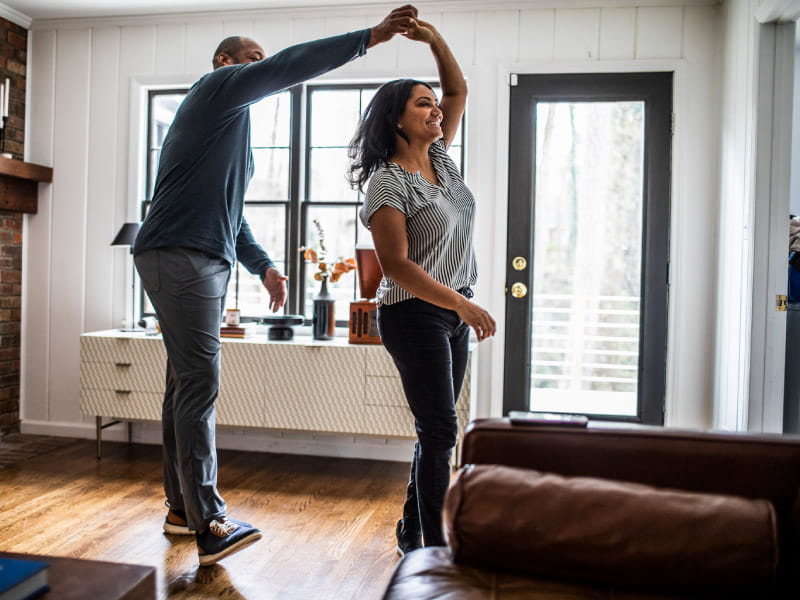Latin dance can liven up holiday celebrations and boost health
By Lourdes Medrano, American Heart Association News

Family gatherings and workplace parties with mouth-watering spreads are hallmarks of the holiday season. But if you want to boost your holiday cheer and your health simultaneously, tap your feet to the beats of salsa, merengue and bachata.
Adding Latin dance to holiday celebrations not only enlivens a party, but it also can keep you healthy. "Dance is good for brain health and heart health," said Dr. Susan Aguiñaga, a professor in the department of kinesiology and community health at the University of Illinois at Urbana-Champaign.
Research shows that dance can reduce symptoms of stress, anxiety and depression. Aguiñaga's own research focused on Latin dance suggests that learning the rapid and sometimes complex movements of salsa, cha-cha-cha, merengue and bachata may improve memory.
It makes sense, she said, because you have to learn new moves. "You have to combine those steps and then you have to remember those steps from previous classes to create dance sequences."
Aguiñaga described the hip-swaying merengue, with roots in the Dominican Republic, as the easiest Latin dance to learn because of its simple steps. Salsa, a fast-paced confluence of Cuba's African and Spanish musical heritage, is the most difficult because of its complex movements, she said.
Latin dance can be an endurance exercise that keeps you fit and improves heart health – at any age. And because dance is an integral part of Latin American culture, many Hispanic people prefer it over other forms of exercise, she said.
Aguiñaga has studied cognitive function among older Latino people through dance, which she said is crucial because they face a higher risk of developing Alzheimer's disease, the most common form of dementia. Older Hispanic people are 1.5 times more likely to have dementia than their white peers, according to the Centers for Disease Control and Prevention(link opens in new window).
But Latin dance is not just for Latino people, Aguiñaga said. "All populations – young and old, children, adolescents, adults, older adults – can benefit," she said.
Dr. Elizabeth Pulgaron, an associate professor of clinical psychology at the University of Miami, said dance is an effective aerobic workout that releases endorphins, hormones that produce feelings of joy and well-being. It also can lead to bonding with others who enjoy dancing routinely in a class or another group setting.
"You're building a community and a moment in time where you connect with people from all different places and backgrounds and stages of life," she said.
But shuffling your feet to Latin rhythms at home can be just as fun and good for your body, Pulgaron said. She's been doing it since she was a youngster growing up in a Cuban household in Miami. Her grandmother made the children clean on Saturdays with music.
"Dancing with the broom made it a little bit more tolerable," she said.
It also helped foster in her a passion for Latin dance. These days, she dances to Latin music in a Zumba class.
When it comes to Latin dance, the intergenerational aspect is worth noting, Pulgaron said. "Perhaps you learned to dance from your parents or grandparents, or perhaps it's something you do in moments of celebration and hopefully something that can continue throughout one's life."
And when it comes to holiday celebrations with spreads that can encourage overeating, Latin dance could prove useful in helping to keep revelers healthy.
"We might need to do some extra dancing or put in some other forms of physical activity to be able to balance that, but it is a start, and I think that's important," Pulgaron said.





